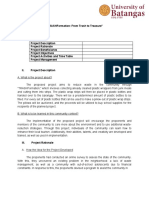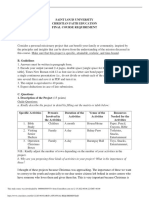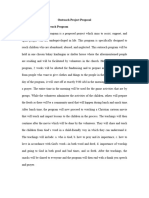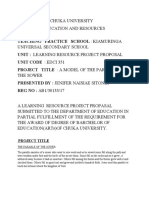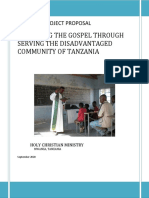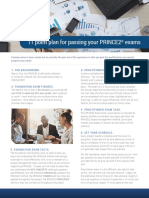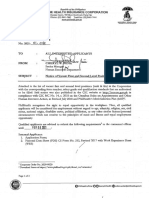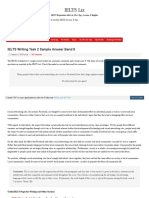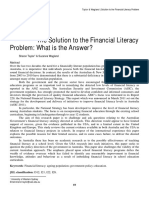0% found this document useful (0 votes)
40 views7 pagesModule 6 Part 5. Project Proposal
The document outlines a project proposal for a community project aimed at providing catechetical and religious teaching activities for children in an evacuation center. It details the purpose, structure, objectives, methodologies, budgetary requirements, and schedule of activities for the project. The proposal emphasizes the importance of guiding students and mentors in project implementation and evaluation while addressing relevant UN Sustainable Development Goals.
Uploaded by
simonlara410Copyright
© © All Rights Reserved
We take content rights seriously. If you suspect this is your content, claim it here.
Available Formats
Download as PDF, TXT or read online on Scribd
0% found this document useful (0 votes)
40 views7 pagesModule 6 Part 5. Project Proposal
The document outlines a project proposal for a community project aimed at providing catechetical and religious teaching activities for children in an evacuation center. It details the purpose, structure, objectives, methodologies, budgetary requirements, and schedule of activities for the project. The proposal emphasizes the importance of guiding students and mentors in project implementation and evaluation while addressing relevant UN Sustainable Development Goals.
Uploaded by
simonlara410Copyright
© © All Rights Reserved
We take content rights seriously. If you suspect this is your content, claim it here.
Available Formats
Download as PDF, TXT or read online on Scribd
/ 7







